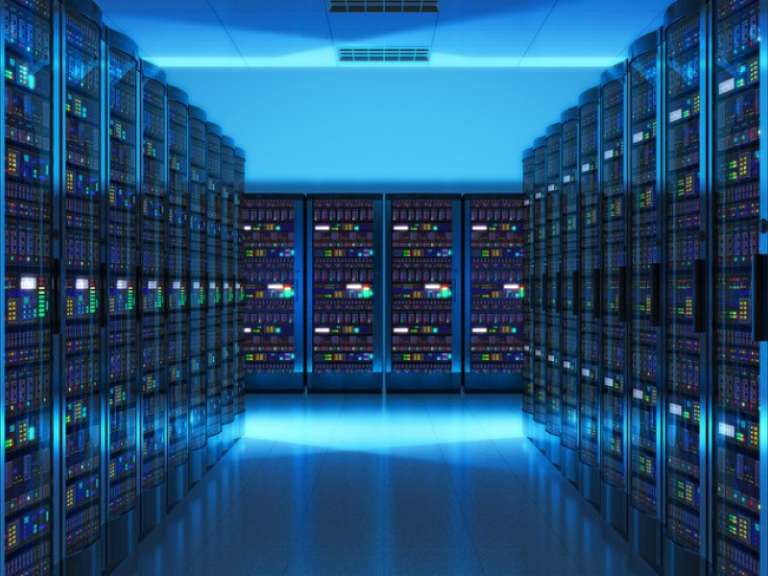The Industrial Internet of Things: Who Really Owns Your Data?
Penny HitchinThe booming Industrial Internet of Things (IIoT) is heralding a new industrial revolution.

The booming Industrial Internet of Things (IIoT) is heralding a new industrial revolution. A 2015 Accenture report, "Winning with the Industrial Internet of Things—How to Accelerate the Journey to Productivity and Growth," estimated that IIoT could add as much as $14.2 trillion to the global economy by 2030. Accenture forecasts that potential benefits of $7.1 trillion could go to the United States, as well as $1.8 trillion to China, $700 billion to Germany, and $531 billion to the United Kingdom.
Developments in the IIoT, or Industry 4.0, as it has been dubbed, are moving swiftly. The network of physical objects, systems platforms, and applications that contain embedded technology is increasingly capable of communicating with other objects and the external environment. The boom in data acquisition and intelligence sharing brings new legal and regulatory implications.
Existing regulatory and compliance codes dictate that businesses must control access to financial systems, protect credit card information, uphold privacy, and protect critical infrastructure. The five characteristics that affect the trustworthiness of an IIoT system are security, safety, resilience, reliability, and privacy. A hallmark of IIoT systems is that many actors are involved, and thus legal implications concerning data ownership, data sharing, privacy, and security are likely to be complex. However, the IIoT is of such recent provenance that a fresh "greenfield" approach may be required to establish new standards.
Increased computer capacity and cloud computing lie behind the onward march of big data. Four cornerstones are enabling the industrial internet to become so significant. One is the increase in the range of "things" — components and sensors — that can be usefully connected. The second is increased connectivity, enabled by advances in communications technology that have allowed the networks that handle machine-to-machine communications to become commonplace in the industry. Powerful software platforms that compile and analyze the data represent another cornerstone. Software applications and services — many of them created for specific industries or vertical markets — are the fourth.
The emerging use of software and analytics creates new and significant partnerships between utilities, OEMs, software developers, and the companies analyzing the mass of data that is collected. The big data collected is a valuable business asset, but where does ownership actually lie?
Typically, the owner is whoever generated the data itself or owns the mechanism that generated the data. The facility that generates the data may collect and use sensor data from within the plant to monitor performance and condition and predict and plan maintenance.
The data may be sent on to a data center for cloud storage and/or processing. When it is aggregated into a database or analysis is carried out so that intellectual value is added, it becomes intellectual property (IP). The organization carrying out this work legally owns the IP. Generally, a vendor or entity may ask for rights to use data for a specific purpose but does not take over ownership.
Data-crunching services aggregate data to extract further value, which may be of commercial benefit to other facilities. When a manufacturer collects data from across a wide fleet, trends can be identified. Information gleaned from analysis of one customer's assets can be used to benefit others who are encountering similar symptoms. This feedback enables others in the ecosystem to benefit from the lessons learned and contributes to an increase in efficiency across the plant.
The Cloud Council Customer Standards Committee was founded to help cloud users. It seeks to influence organizations developing standards for IIoT, as well as to help members understand issues that arise from the use of cloud computing.
The Industrial Internet Consortium has a working group considering legal issues, and energy is one of the industries (along with automotive and health) that it identifies as being in the vanguard of the IIoT revolution.
New classes of devices, including wearables and drones, are collecting information that was not previously available. Any personal data collected is subject to national data protection legislation, which governs what personal data can be collected and how it can be used. Data confidentiality should be included in any agreements with third parties.
Cyber security is an area of increasing significance. Many industrial networks, which were originally designed to be isolated, are now connected, potentially exposing them to increasingly sophisticated attacks. In connecting objects to a network, companies must ensure that the connected components or objects, as well as the data that they collect, are secure from third party access or interference. Companies should also be aware that data generated, gathered, or stored by IIoT devices may be demanded in a lawsuit as part of "any electronically stored information."
The IIoT is a very modern development. It has the potential to transform an owners' approach to asset management. However, the new technology brings with it challenges. Harnessing IIoT and deploying cloud technology requires new ways of thinking and new approaches to company partnership. The introduction of IIoT means that asset management and maintenance is on the cusp of exciting changes in efficiency.
Blockchain technology has the potential to change the way we buy and sell power.
Wind energy continues to become more competitive, expanding its share of global energy production.
Cloud-based digital solutions are empowering asset managers to collect and analyze more data from their plants that improves safety and profitability.